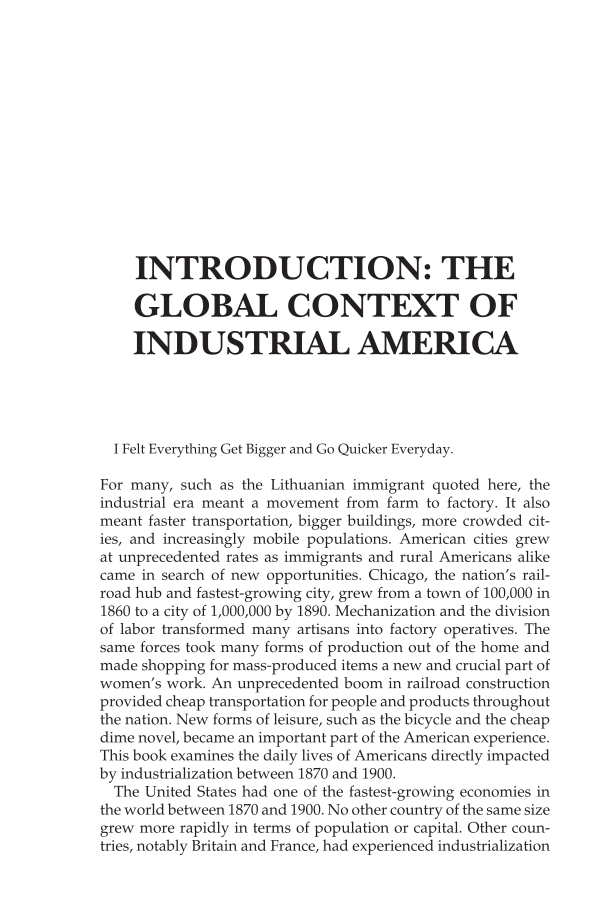I Felt Everything Get Bigger and Go Quicker Everyday. For many, such as the Lithuanian immigrant quoted here, the industrial era meant a movement from farm to factory. It also meant faster transportation, bigger buildings, more crowded cit- ies, and increasingly mobile populations. American cities grew at unprecedented rates as immigrants and rural Americans alike came in search of new opportunities. Chicago, the nation’s rail- road hub and fastest-growing city, grew from a town of 100,000 in 1860 to a city of 1,000,000 by 1890. Mechanization and the division of labor transformed many artisans into factory operatives. The same forces took many forms of production out of the home and made shopping for mass-produced items a new and crucial part of women’s work. An unprecedented boom in railroad construction provided cheap transportation for people and products throughout the nation. New forms of leisure, such as the bicycle and the cheap dime novel, became an important part of the American experience. This book examines the daily lives of Americans directly impacted by industrialization between 1870 and 1900. The United States had one of the fastest-growing economies in the world between 1870 and 1900. No other country of the same size grew more rapidly in terms of population or capital. Other coun- tries, notably Britain and France, had experienced industrialization INTRODUCTION: THE GLOBAL CONTEXT OF INDUSTRIAL AMERICA
Document Details My Account Print multiple pages
Print
You have printed 0 times in the last 24 hours.
Your print count will reset on at .
You may print 0 more time(s) before then.
You may print a maximum of 0 pages at a time.


































































































































































































































































































































